Running is both a fitness activity and a sport. It is one of the most efficient cardiovascular exercises you can do. But runners are prone to specific injuries because the poor running form can over-stress muscle, joints, and bones. If you are new to running, take the time to learn the proper techniques in your early stages. It will increase your enjoyment and decrease the risk of injury.
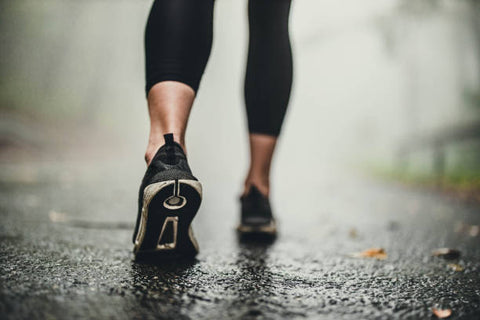
What Is The Importance of Running Form?
Running form is the way you move your body while running. It includes:
-
Where your arms and legs are positioned
-
How your foot lands on the ground
-
How you roll through your stride
-
How your body transfers energy
Running form is important for several reasons:
Safety: Good running style can help prevent injuries, from common problems like knee pain to more serious conditions like stress fractures or shin splints.
Efficiency: Proper running technique helps you run faster with less effort. The more efficient your running is, the faster you can go with a given amount of effort.
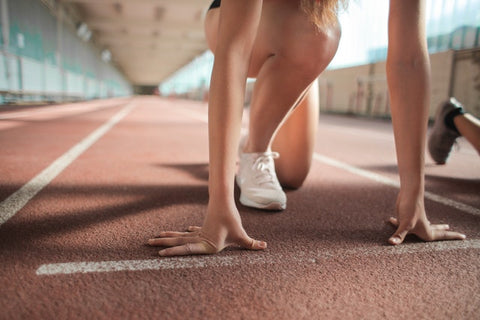
Speed: The right running form will help you get more out of each stride, so you don't have to take as many steps to cover a given distance.
Enjoyment: The better your form is, the less it will hurt to run and the more fun your run will be.
Which Are The Common Running Mistakes New Runners Make?
There are a lot of mistakes new runners make, and they have a big impact on your performance. They include:
Heel Striking
The most common error is to land on your heel when you first start running. However, this is a natural tendency. It is wrong because when your foot lands on the ground, it impact to your upper body and legs. Heels are meant to be impact absorbers, not impact generators. This mistake can lead to all kinds of stress injuries and knee pain.
Overstriding
Another common running mistake happens when you land your feet too far in front of your body. This action is called overstriding, which is one of the key reasons for injuries. It also implies that your center of gravity shifts forward, making it harder for you to maintain balance and stability. Overstriding also requires a great deal of energy to push off again from the ground as you take every step.
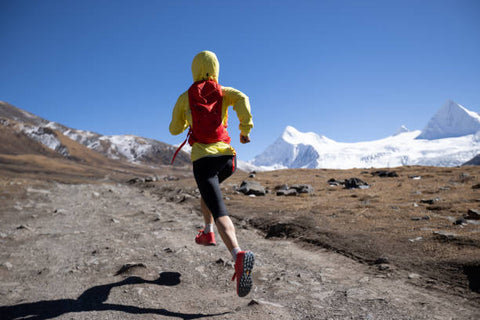
Wearing Improper Shoes
Running is a high-impact activity that puts pressure on your joints, bones, and muscles. It becomes even more intense for runners with flat feet, where the arch is flattened out, and the entire sole of your foot touches the ground when standing. Wearing the wrong pair of shoes or running barefoot increases the risk of injury significantly in this case.

Unrelaxed Upper Body / Poor Body Posture
When working on your running technique, the first thing to focus on is your upper body. Many new runners tense up their shoulders and neck, which leads to tightness in their upper bodies. Tight muscles will slow you down and increase your risk of injury. If your upper body is constantly tensed up, you'll also use more energy than you need to when running. A good way to check if you're tensing up is to look at your fingers. If they're clenched into fists or white, then you are tense.
Improper Arm Movements
Your arms are an important part of your running technique because how you move them affects how much energy you expend. You don't want to waste energy by flailing your arms around or swinging them too far back and forth. If you don't control your arms correctly, they can impede your movement by crossing over the midline of your body.
How To Fix Running Form Mistakes
Improper running can cause injury, increase energy expenditure and negatively impact performance. Here are different ways to optimize your form:
Bend at the elbows. Keep your elbows bent at 90 degrees and pump them back and forth. Do not let your arms cross the body's midline, as this can lead to a shoulder injury.
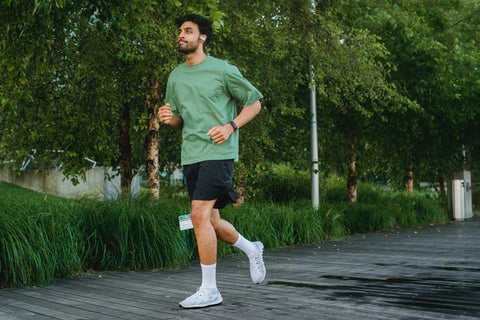
Engage your core. When running, focus on pulling your belly button toward your spine and keeping it tight throughout the run. This technique will help you maintain good posture and prevent excessive bending at the lower back, leading to injury.
Land on your midfoot. You should land on the middle of your foot rather than the heel or ball of your foot. The technique helps absorb shock more effectively and reduces excess stress on your knees, hips, and lower back.
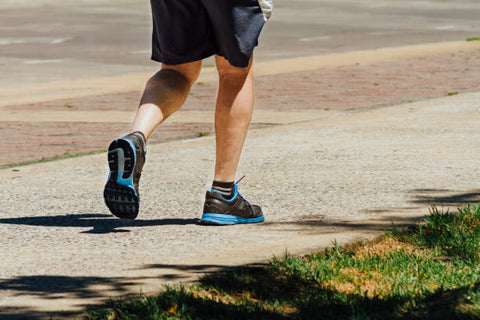
Maintain a good posture. Good running posture helps ensure air flows freely through the lungs and prevents muscle strains from poor movement patterns. Stand tall with your chest up and shoulders back throughout your run for optimal lung capacity and muscle use.
Lean forward. Lean forward from the ankle, not the waist. You'll run in a crouch position if you lean from the waist. Leaning from the ankles allows you to maintain an efficient running posture while still getting that forward momentum going.
Keep Your Head Up. Keeping your head should never be a struggle. Looking down puts pressure on your spine and neck, which could cause pain or discomfort. Keep your eyes straight ahead in a natural position instead.
Use the right footwear. People have different feet and different running styles, so the right shoe for one person might be wrong for another. The best way is to go somewhere the sellers will analyze your running style and prescribe a shoe accordingly.

Bottom Line
While the poor running technique is generally an issue that develops over time, you can nip it in the bud before ever becoming a problem. However, the biggest and most important lesson to take with you is not just to do one thing. Don't rush in and immediately attempt some long-distance runs and then try to change your entire running style overnight. Take it slow. Consider fixing your running form as an ongoing process.















